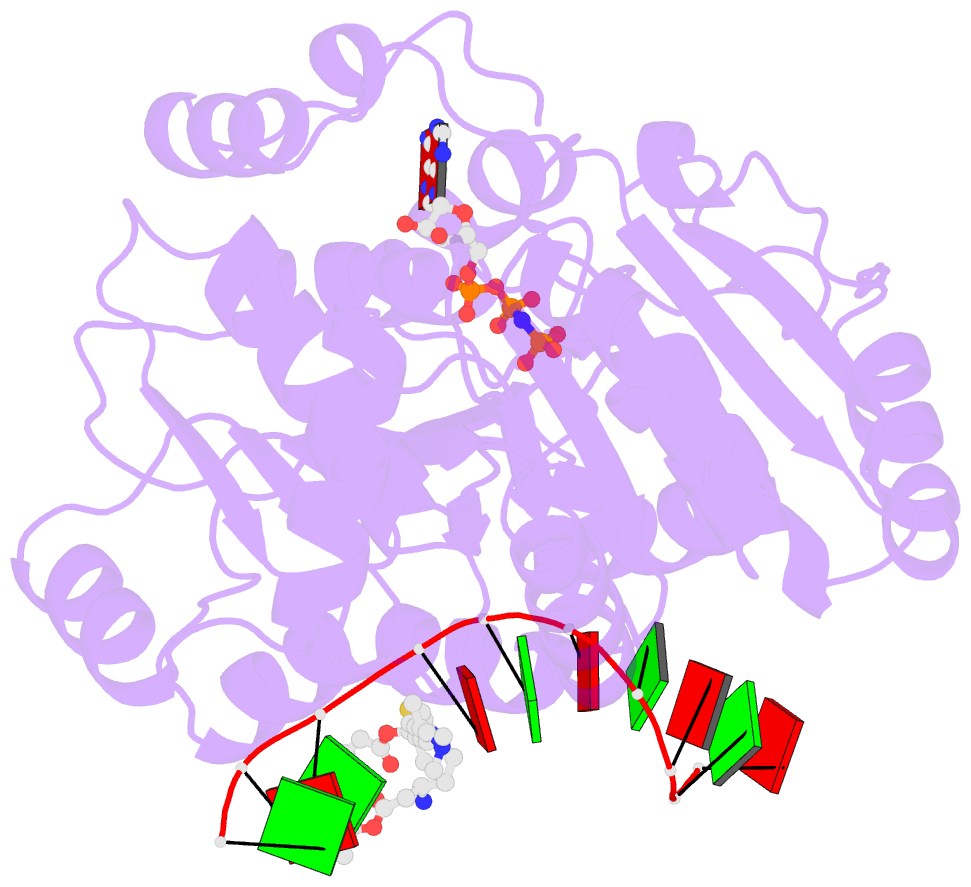Summary information and primary citation
- PDB-id
- 6xki; SNAP-derived features in text and JSON formats;
DNAproDB
- Class
- translation-RNA-inhibitor
- Method
- X-ray (2.87 Å)
- Summary
- Crystal structure of eif4a-i in complex with RNA bound to des-mepatea, a pateamine a analog
- Reference
- Naineni SK, Liang J, Hull K, Cencic R, Zhu M, Northcote P, Teesdale-Spittle P, Romo D, Nagar B, Pelletier J (2021): "Functional mimicry revealed by the crystal structure of an eIF4A:RNA complex bound to the interfacial inhibitor, desmethyl pateamine A." Cell Chem Biol, 28, 825. doi: 10.1016/j.chembiol.2020.12.006.
- Abstract
- Interfacial inhibitors exert their biological effects through co-association with two macromolecules. The pateamine A (PatA) class of molecules function by stabilizing eukaryotic initiation factor (eIF) 4A RNA helicase onto RNA, resulting in translation initiation inhibition. Here, we present the crystal structure of an eIF4A1:RNA complex bound to an analog of the marine sponge-derived natural product PatA, C5-desmethyl PatA (DMPatA). One end of this small molecule wedges itself between two RNA bases while the other end is cradled by several protein residues. Strikingly, DMPatA interacts with the eIF4A1:RNA complex in an almost identical fashion as rocaglamide A (RocA), despite being completely unrelated from a structural standpoint. The structural data rationalize the ability of PatA analogs to target a wider range of RNA substrates compared to RocA. We define the molecular basis of how DMPatA is able to clamp eIF4A1 onto RNA, imparting potent inhibitory properties to this molecule.





